Holiday Arts Preview: Visual Arts
By • November 20, 2019 0 958

Chiura Obata: American Modern
Smithsonian American Art Museum
Opens Nov. 27
Born in Okayama, Japan, Chiura Obata (1885–1975) immigrated to San Francisco in 1903. In 1942, when World War II fears and Executive Order 9066 forced Obata and more than 100,000 West Coast Japanese Americans into incarceration camps, he created art schools in the camps to help fellow prisoners cope with their displacement and loss. Today, Obata is best known for majestic views of the American West, sketches based on hiking trips to capture what he called “Great Nature.” Every work is grounded in close observation, rendered with calligraphic brushstrokes and washes of color. Teaching and community engagement are part of Obata’s legacy as an American artist. A professor at the University of California, Berkeley, and a founder of the East West Art Society, he facilitated cross-cultural dialogue despite widespread prejudice against Asian Americans. The more than 150 paintings and personal effects in this retrospective will take visitors on an epic journey in which peaks, valleys, storms, and sunlight may reflect universal challenges to becoming a successful artist, as well as the particular struggles and dreams of America’s minority and immigrant communities.
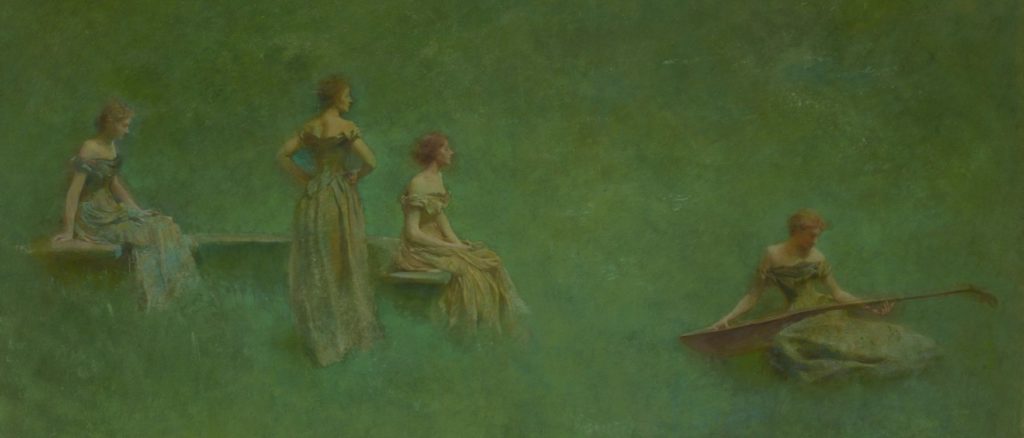
“The Lute,” 1904. Thomas Wilmer Dewing. Courtesy Freer Gallery.
Dewing’s Poetic World
Freer and Sackler Galleries
Opens Nov. 27
Best known for his tonal compositions featuring solitary female figures lost in thought, Thomas Wilmer Dewing (1851–1938) was part of an active social network of collectors, painters and art dealers at the turn of the 20th century, the nascent era of America’s artistic maturity. His life was a whirl of comingling dinner parties, dances, salons and theater, yet the women in Dewing’s paintings appear to be passive sitters, locked in quiet isolation. Why? This exhibition — part art exhibition, part window into the cultural milieu of America’s Gilded Age — will explore Dewing’s social life and connections, revealing how his art was influenced by his community, particularly Charles Lang Freer, who encouraged him to pursue Japonisme, and Stanford White, the preeminent architect of what has been called the American Renaissance. Archival photographs will provide further insight into his dynamic lifestyle at the Cornish, New Hampshire, art colony he established with his wife, artist Maria Oakley Dewing, a far cry from urban high society.
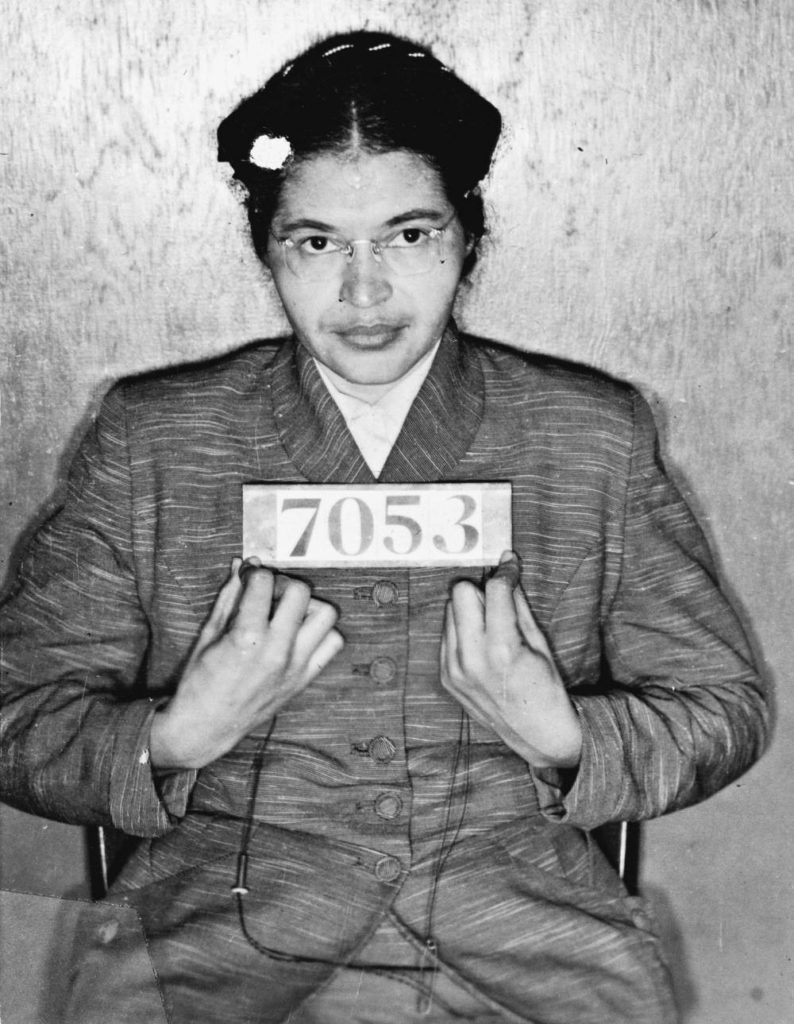
“Rosa Parks: In Her Own Words” opens at the Library of Congress on Dec. 5.
Rosa Parks: In Her Own Words
Library of Congress
Opens Dec. 5
Rosa Parks (1913–2005) is often mischaracterized as a quiet seamstress, with little attention paid to her full life story. “Rosa Parks: In Her Own Words” will reveal the real Rosa Parks as a seasoned activist with a militant spirit forged over decades. This will be the first exhibition of the Library of Congress’s Rosa Parks Collection, immersing visitors in Parks’s words, reflections, handwritten notes and photographs from throughout her life. Born and reared in Alabama during the Jim Crow era of legally mandated segregation, she married Raymond Parks, a charter member of the NAACP branch in Montgomery, in 1932. Together, they were early activists for racial equality, organizing to free the Scottsboro Boys. In 1943, Parks became the secretary of the Montgomery branch, which focused on voter registration and cases of racial violence and discrimination. After the famous bus incident of 1955, she was punished with death threats, unemployment, and poverty, but remained committed to the struggle for social justice, advocating for civil rights, workers’ rights, women’s rights, prisoners’ rights, and black youth while speaking out against apartheid and other injustices abroad.
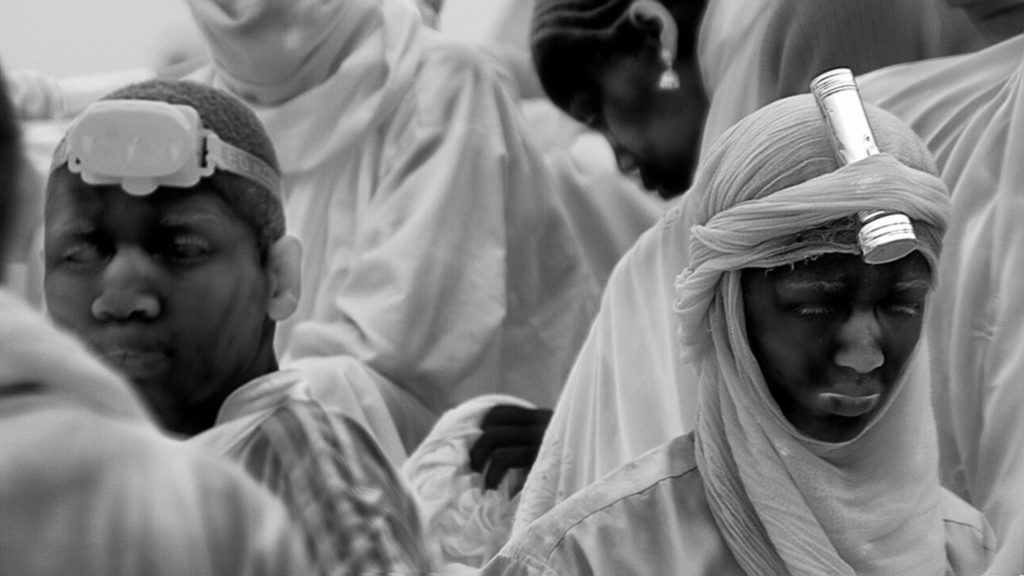
A still from Richard Morse’s “Incoming,” now at the National Gallery of Art. Courtesy NGA.
Richard Mosse: Incoming
National Gallery of Art
Opened Nov. 17
Seeking a new way to shed light on the refugee crisis, artist Richard Mosse and cinematographer Trevor Tweeten captured fragments of events along two major pathways leading into Europe using a surveillance camera, originally designed for military use, that produces images by detecting thermal radiation. The camera can register the heat of a human body from as far as 18 miles away. Mesmerizing and unsettling, the immersive video installation “Incoming” presents viewers with the sights and sounds of mass migration. Mosse aimed the camera from the Turkish border into Syria, documenting the roar of American fighter jets and the urgency of first responders on shore. Along the second route, leading north through Africa and across the Mediterranean, Mosse shows glimpses of the migrants’ journey and the struggle to secure a spot aboard overloaded transport vehicles traversing the Sahara. Scenes from the emergency shelter at Berlin’s Tempelhof Airport and the notorious Jungle refugee camp in Calais, France, suggest the migrants’ bleak and tenuous circumstances. Mosse walks a tightrope, exposing the intimate stories of these refugees while providing a veil of privacy, isolating the plight of individuals while underscoring their interconnectedness with all humanity.
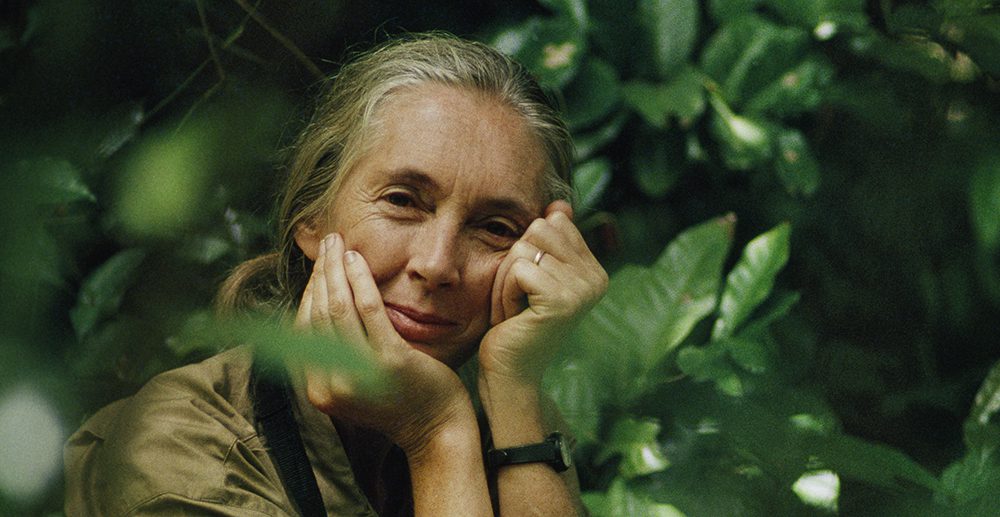
Dr. Jane Goodall’s life and work is the subject of the exhibition “Becoming Jane.” Courtesy National Geographic.
Becoming Jane: The Evolution of Dr. Jane Goodall
National Geographic Museum
Opens Nov. 22
Dr. Jane Goodall, founder of the Jane Goodall Institute and a United Nations Messenger of Peace, braved the unknown to give the world a remarkable window into humankind’s closest living relatives: chimpanzees. In this hands-on, transportive multimedia exhibition, visitors will explore Goodall’s early years through iconic images and a multiscreen experience and venture on a 3D exploration of Tanzania’s Gombe Stream National Park, where she did her famous behavioral research on chimps. Also on view will be a replica of her research tent and features about her current role as a leader in community-centered conservation and youth empowerment.
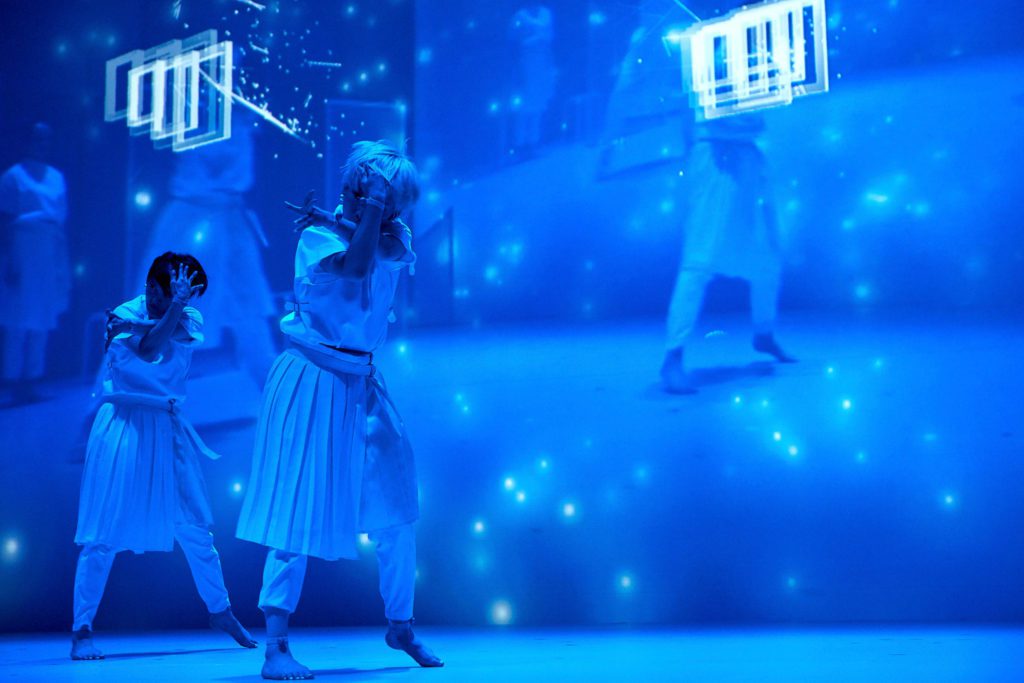
Daito Manbe’s immersive experience “Liquid Motion” is at Artechouse through Dec. 1. Courtesy Artechouse.
Lucid Motion
Artechouse
Through Dec. 1
Daito Manabe is a Tokyo-based artist and innovator who merges data analysis with interactive and visual experiences. He founded Rhizomatiks in 2006 to foster collaboration between media art, industry and business. His current exhibition at Artechouse, “Lucid Motion,” is an immersive experience that features three installations exploring human motion through dance-based digital installations. While Manabe’s mission as an artist/innovator reads like a tech-head with a messiah complex (“to discover and elucidate the essential potentialities inherent to the human body, data, programming, computers, and other phenomena, thus probing the interrelationships and boundaries delineating the analog and digital, real and virtual”), “Lucid Motion” is an unsettling, powerful and truly avant-garde 21st-century experience. Through sound design and immersive, large-scale digital projections, the installation is a feat of high-wire virtual “nonreality,” melding technology and music with performance art.

